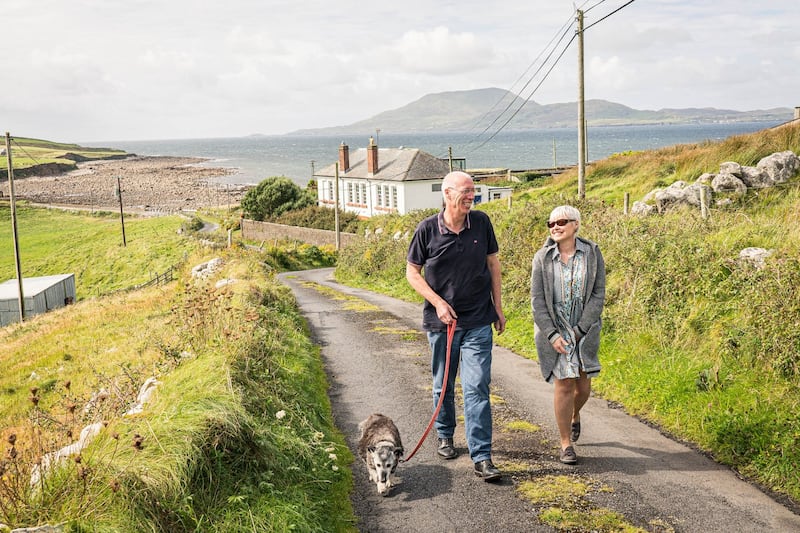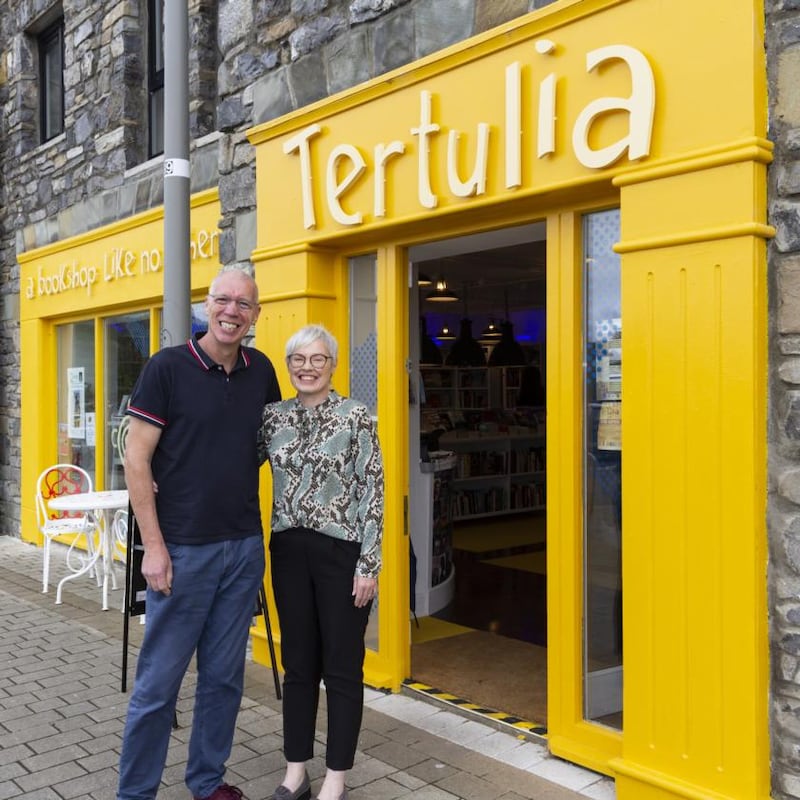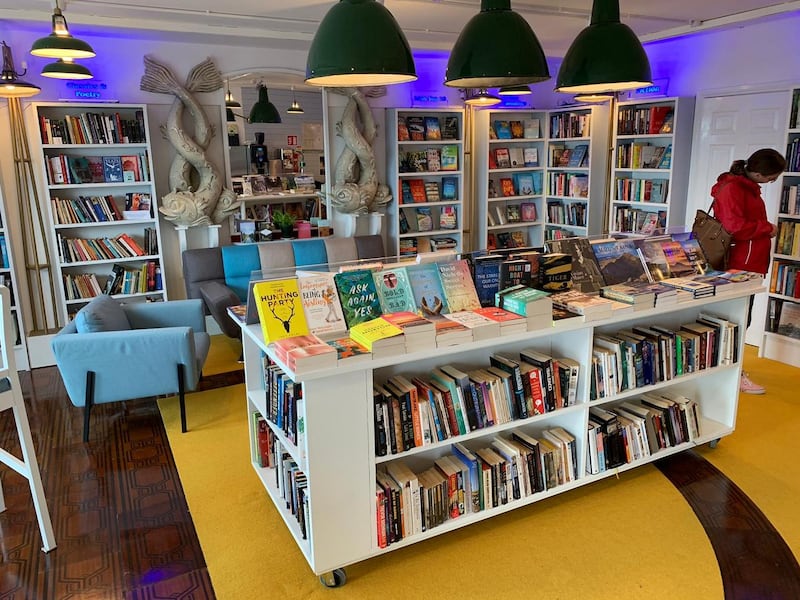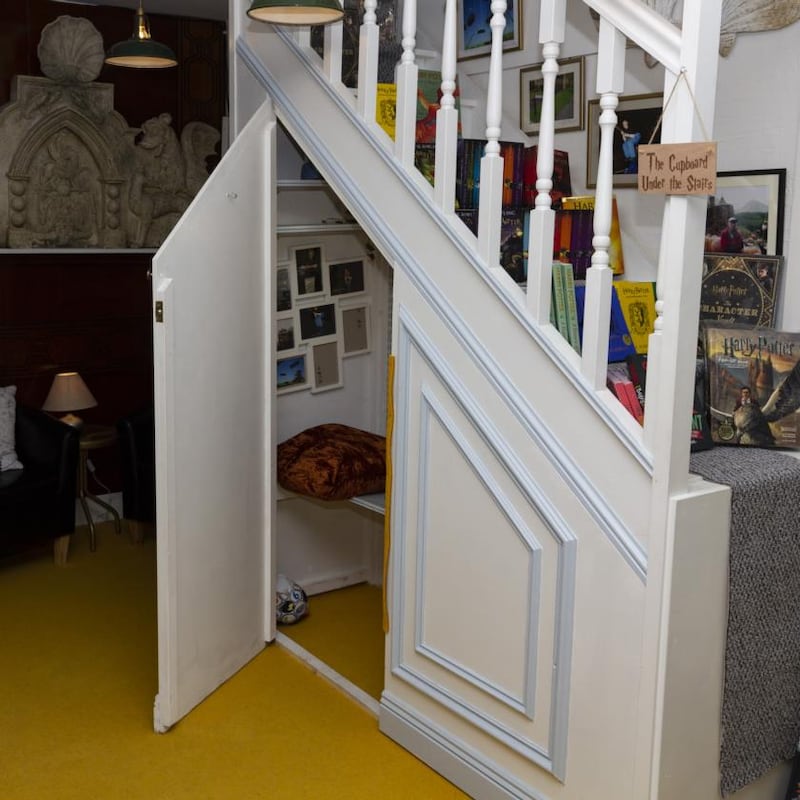It's safe to say there might not be another person in Ireland who could point to their stair rail and boast that James Bond (in the hands of our own Pierce Brosnan) once clambered over it. Or that their handmade kitchen tiles (featuring a series of scorpion images) featured in the Russell Crowe film, Proof of Life. Look it up. Meg Ryan deals with Russell's questions about the tiles – cut to a close-up of the tiles. These are tiles from a fictional home of a fictional drug baron, which now line the real-life kitchen wall of Neil Paul and Bríd Conroy, who have lived on the west coast of Ireland for the past 20 years.
Conroy is from Dublin, Paul from London, but of Irish descent. He was employed in the film industry and had just finished work on the opening-scene set of Saving Private Ryan at Curracloe in Co Wexford, when the couple decided to stay on to take a holiday. A wrong turn in Co Mayo led to the discovery of a derelict schoolhouse by the beach near the ferry to Clare Island. They fell in love with it, and by the end of the day, before they returned home to Westminster, London, they were the owners of a large, remote, 1937-built building overlooking the sea in Louisburgh. It was in need of lots of TLC. Their original idea was to open a hotel, but there were planning issues and they settled for making it their future home. After two years of inter-country living they upped sticks and moved to Mayo, along with their one-year-old daughter, Rusty James.

They set to work, and for the next 10 years Paul commuted to London, taking jobs on film sets in the areas of construction and lighting. Funded by his work and the accountancy business Conroy set up at home, the renovation work continued. Budgets were tight and there was, the couple reminisces, lots of upcycling and innovation.
"I've always been something of a hoarder, a magpie," says Paul, describing his years of picking through the discarded pile on film sets. "It's amazing how much stuff gets thrown out in the film industry. I worked in Pinewood Studios when I first worked in the industry. They were carrying out renovations and took out all their cast-iron radiators from the 1930s. They would fetch about €500 each now, but I got the 15 that I have in the house for nothing."

Paul did most of the work himself. They had bought at the right time, at a good price, and didn’t have the pressure of a mortgage. The roof of the house was in quite good condition, but the ceilings needed attention. Paul took out the ceilings of the three original classrooms and put up big beams to support the roof. The ceiling height allowed him to put mezzanines in each of the classroom spaces; he put a lot of work into insulating the building.
The school had closed in 1970, and after almost 30 years of western seaboard exposure, the building had suffered the ravages of neglect. There was no preservation order on the structure, but the couple were determined to ensure restoration was in keeping with the era and design. The windows had disintegrated beyond repair when they purchased, so they commissioned double-glazed replicas of the original wooden sash windows. They managed to salvage many of the floorboards in the building, and worked on distressing newer boards where they had to replace in areas too worn to maintain.
Having worked in the lighting and special effects departments on all of the previous Harry Potter movies, Paul decided, 10 years ago, as the last film of the series went into production, that he'd had just about enough of working in London and that it would soon be time for a change of pace. "Working in the film industry," he says, "sounds glamorous. And of course it does have its moments, but unfortunately those moments are few and far between and 90 per cent of the time, in studios you're working in a dark environment with a lot of slog and you never see the light of day or your family." It was time, Paul decided, to base himself in Ireland full-time.

Over the next few years the couple focussed on finishing the renovations, and Conroy’s accountancy work was their main source of income. On a whim, Paul applied for a job managing a bookshop in the busy nearby town of Westport. He had always been a book lover and recalls how books got him through the long stretches of waiting time on set. “There’s a lot of hanging around. I’d be one of the only people always reading a book, everybody else would be reading the paper.” Somewhat to his surprise, Paul got the job and a new passion developed. “It was completely out of the blue. I never dreamed that I’d be managing a bookshop. It went really well and I decided I wanted to open my own.”
And so it was, just over two months ago, that Tertulia opened. Tertulia, a Spanish word describing a place to meet and talk about art and books, is the new family run business. It’s a bookshop, café and small event/exhibition space located in the heart of Westport. Paul, Conroy, and daughter Rusty have manned the business over the summer and, says Paul, been getting a great reaction from customers.
While books are at the heart of the business, design-wise the space provides an opportunity to exhibit and engage with other items of memorabilia from Paul’s past career.
“We leased the building for five years and it was an empty shell which needed to be filled. We have big old factory lights that came out of Pinewood Studios. The whole shop is full of them. There’s also big fish from my time working on the Alice in Wonderland film. I was always looking out for unusual things on films and elsewhere.”



Amongst other “unusual”, items that have made the journey from film set to the Mayo bookshop are floorboards from the James Bond film, The World is Not Enough, from a scene filmed in what was supposed to be Turkey, where James was on a sojourn with his girlfriend. Russian fishing floats from the 1950s, which washed ashore at Louisburgh, form table decorations. After working with some of the world’s best lighting directors and art directors, says Paul, he developed a good eye and a certain visual and aesthetic awareness.
The highlight for many is the shop’s Cupboard Under the Stairs, replica, which Paul built and equipped with original cushions from the Harry Potter set.
“A few things from Harry Potter came my way over the years working on the films. People are obsessed with Harry Potter, the movies and the books. Almost every day 20 to 30 people come in to have their photograph taken in the cupboard.
“It’s all great fun, we’re making friends and connecting with people and I sort of wish we’d opened the business 20 years ago.”
















